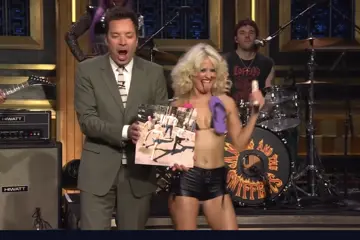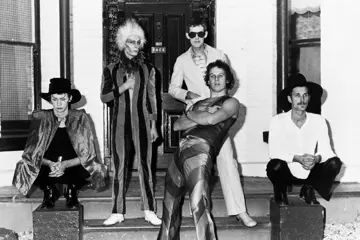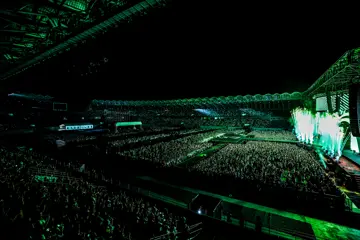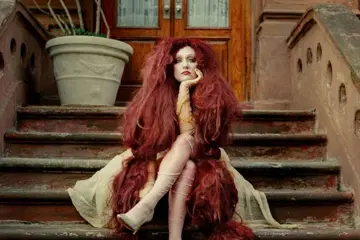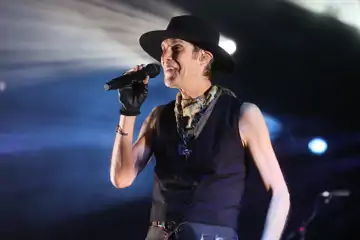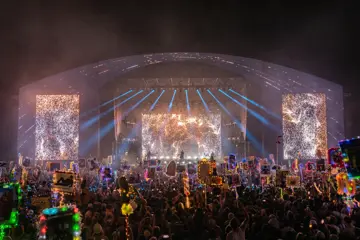
In the theatre, sight is not the only sense that's engaged; live performance is driven by a visceral power that heightens the sensitivity of the whole suite of human perception. Playing with the default equilibrium of our bodily experience can prove a canny tool for theatre-makers, and indeed, deprivation can be as potent a statement as overload. There is, however, a fine line between well-judged restraint and total obscurity, and Victoria Hunt's TANGI WAI... the cry of water, is often swamped by a damaging excess of subtlety.
Drawing on spiritual traditions from Hunt's Maori ancestry, this piece attempts to conjure a realm of the infinite - an intangible, incorporeal expanse. From the inky black, as a symphony of otherworldly sounds swell into a cosmic cacophony, a prick of light suddenly appears. We are transfixed, this endless void suddenly sharpened into a singularity of pure white. Various forms of illumination follow - a roiling carpet of glowing ripples; a slash of piercing blue that spits and crackles with electric intensity; a cone of glowing, nebulous mist - bringing fleeting reference points of form, colour and dimension to this shapeless abyss. Occasionally a human form emerges from the pervasive gloaming only to be swallowed up once more by the darkness.
From a technical and even a theatrical perspective, there's a lot that's very successful about this piece. James Brown's throbbing, tectonic electro score fills the space with a dense fug of sound that ratchets up the emotional intensity. But without question, the stars of the show are Fausto Brusamolino and Boris Morris Bagattini, whose light and mist designs (a fine mist of water drops from overhead for much of the piece) are often jaw-dropping in their inspired creativity and execution.
However, those in search of dance are likely to leave TANGI WAI underwhelmed. Save for a few all too short moments, the performers execute their choreography in almost total darkness. At first, there's a charming novelty to the effect - in such dim conditions, the eyes play tricks so that these human shapes twist and morph in unnatural ways as the pupils strain to gather enough light. But this enigmatic quirk soon becomes a disengaging gimmick, and eventually downright frustrating as the fine details of the choreography are lost to the shadows.
One of the most striking moments of the evening comes at the curtain call when 12 performers file back on stage to take a bow. It's a revelation that there are so many bodies in this work, and begs the question, why enlist such a substantial ensemble if their presence remains largely unnoticed. It's hard to pinpoint the rationale for making the danced elements so wantonly inscrutable, except that it seems TANGI WAI's conceptual philosophy has overwhelmed its practical reality. It's an unfortunate miscalculation, as the flashes of dance that do find their way to a fleeting light source unveil a language of sensuality and wrought yet burnished lines. It seems some revisions to this 2015-made piece would be shrewd; relatively small adjustments could transform it from a dark mystery into an incandescent success.
Dance Massive 2017 presents Victoria Hunts TANGI WAI… The Cry Of Water, at Meat Market until 18 Mar.


